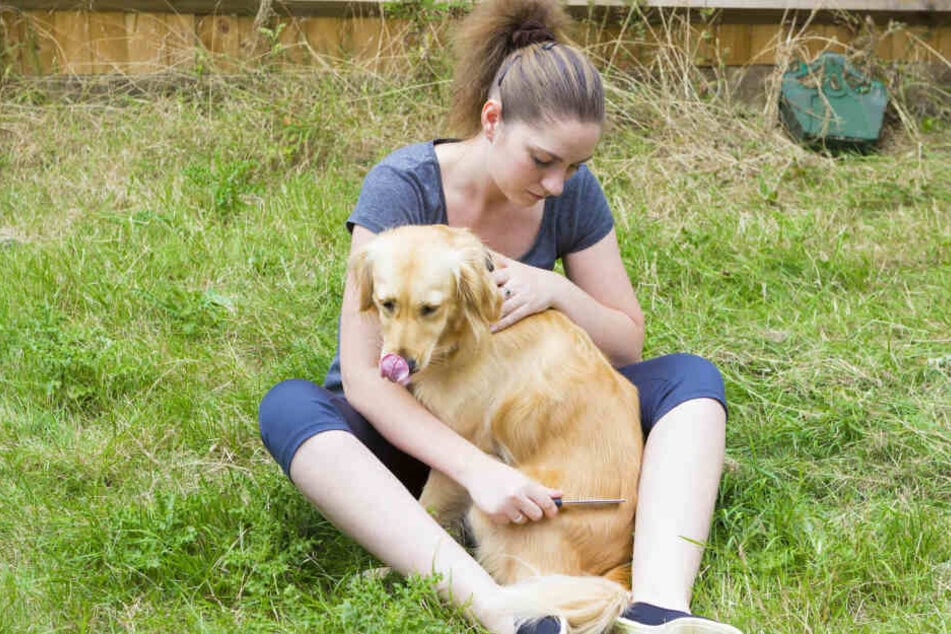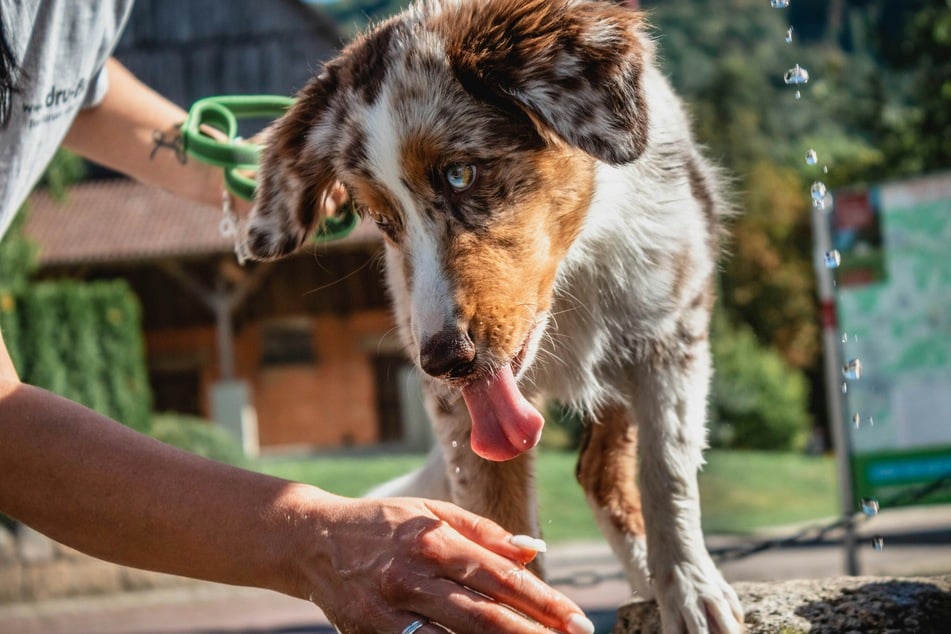Can fleas jump from dogs to humans?
If your dog is furiously scratching itself or constantly picking at a spot in its fur, it might be a sign that it has picked up some fleas. But can dog fleas also make the jump up to humans?

There are few creatures in the world more feared and hated than the flea. It's not a surprise, either, as they are responsible for countless human deaths - more than half of Europe's population between 1346 and 1353. Yet, we have to coexist with them, as they are never going away. Can the humble dog flea transfer onto us humans, though, and if so, what can we do about it?
Fighting and preventing dog fleas
Some manufacturers offer flea and tick dog collars, which are effective for acute infestations, but also to prevent fleas from making themselves at home in the first place.
It's also a good idea to give your canine companion a good brush with a flea comb on a regular basis, regardless of whether it has fleas. This is a reliable way to stop an infestation from ever developing.
Not least of all, the presence of fleas isn't always immediately detectable, so a thorough grooming session might even fix a problem you never knew you had.

What are dog fleas?
Dog fleas are parasites that feed on warm-blooded animals by penetrating the skin with their proboscis and consuming the blood. A flea bite leaves the skin around the entry point red and sore, with an itch that can be anything from mild to severe.
Flea bites are not just annoying, though, and they shouldn't be underestimated. These tiny little parasites, similar to mosquitoes, can carry a range of dangerous and even deadly diseases, as well as other parasites such as tapeworms.
As a result, if you get bitten by fleas it is a very good idea to head on over to the doctor as soon as possible and have yourself checked out - it's always better to be safe than sorry.
Can dog fleas jump to humans?
Yes, dog fleas can certainly jump to humans, and it can work the other way around as well. These tiny little biters are not picky feeders and are happy to chow down on anyone who gets close, so long as it is a mammal. As a result, you can find dangerous fleas on cats, dogs, rats, and all sorts of animals.
How to recognize a flea bite: Symptoms

Dog fleas usually focus on one area, so the bite marks will be close together. Feeding often happens at night, so if you wake up with a highway of bites on a body part, you're probably dealing with a flea (although bedbugs also commonly pick one small area of skin to feast on).
To make absolutely sure, you can sit your pet on a white or light-colored cloth and give it a good rub. If you notice dark particles falling out of its fur, use a damp paper towel to grind them up and check the smears that they leave on the surface. Reddish brown spots on the paper towel are a sign that the particles are actually flea droppings.
There are a number of other symptoms that could indicate fleas in your dog as well, including the following:
- Excessive itching
- Hair loss
- Problems with skin such as rashes
- Biting and scratching the skin
- Scabs
- Obviously visible fleas
- Gum discoloring
- Sudden jumping and whimpering
- General unhappiness and discomfort
Important: Please keep in mind that dogs can also get nasty illnesses from fleas. It is not just a matter of discomfort. As a result, we'd recommend taking your dog to the veterinarian if you have a suspicion that fleas are afoot.

What to do about fleas
There are a ton of things that you can do to deal with fleas, as well as a variety of preventative measures to take to reduce the risk of them infesting your darling doggo. With this in mind, though, we'd recommend that you go and check out our deep-dive into dog fleas and how you can treat them, prevent them, and the more dog-based risks associated with them.
In the meantime, though, here are a few minor tips and tricks:
- Brushing out the fleas: Get yourself a high-quality flea comb for dogs. This will efficiently remove the nasty parasites, as long as you are pairing it with the regular use of a powerful anti-flea shampoo and highly frequent baths (at least one or two a day).
- Treatments for dog fleas: You need to go to a veterinarian as soon as you suspect fleas, and they will be able to prescribe various anti-flea sprays and lotions to help your dog's skin recover. Use this efficiently and you should be flea-free very quickly.
- Regular baths: Make sure that you are bathing your dog at least once a day, preferably more, when it has fleas. Use a good dog cleaning kit, and the previously mentioned items, and go through your house and wash everything very carefully and thoroughly.
If your dog has the fleas, please don't try to be a hero. Take it seriously, treat your dog appropriately, and take precautions to keep you and your family safe as well.
Cover photo: 123RF/Vasilis Ververidis




